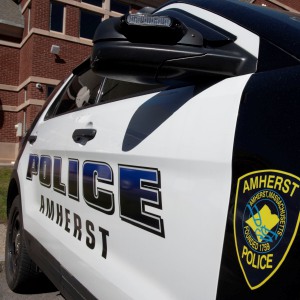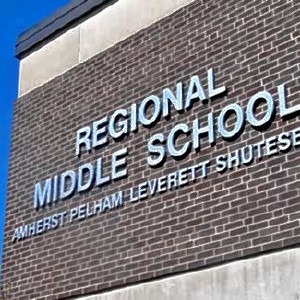Schools say they are testing own water for lead and copper
| Published: 05-05-2017 11:32 PM |
Many of the schools that didn’t take part in recent voluntary state tests for lead and copper in water say they already have programs in place to detect potential threats to student health.
When they find a problem, district officials say they solve it either by removing the problem water source, turning it off or replacing entire sets of fixtures.
A recent voluntary statewide testing program found that 72 percent of school buildings, including some in the Valley, had exceeded federal “action levels” — 15 parts per billion for lead and 1.3 parts per million for copper. In the Valley, some school districts did not participate in the statewide program. Officials at those districts who responded to questions from the Gazette say they already had testing programs in place.
Both South Hadley and the The Gateway Regional School District, which covers a number of the county’s Hilltowns, said their recent testing hasn’t found lead or copper above federal action levels.
In Hatfield, Granby, and Northampton districts, at least one water source has been found to exceed the copper and lead limits in the last two years. Two drinking fountains at Hopkins Academy in Hadley were decommissioned after testing positive for high lead levels.
Extra scrutiny on school drinking water comes after the state released results of a voluntary testing program coordinated by the Massachusetts Department of Environmental Protection and the University of Massachusetts Amherst. The program took water samples from 818 schools in 153 communities between April 2016 and February 2017.
There are no federal or state regulations that require testing for lead and copper in school water supplies, said Edmund Coletta, spokesman for the state’s Department of Environmental Protection.
If a school get its water from a public water system — or provides its own water system through a well — then testing is required, Coletta said. A number of the local districts that did not participate in the program have testing done through their local public works departments.
Article continues after...
Yesterday's Most Read Articles
In Northampton, officials in 2005 tested all school water fixtures and replaced ones that fell short of federal health standards, Tony Kusnierz, supervisor of school maintenance, wrote in an email. In 2016, the district conducted another round of testing and removed or shut down fixtures with high limits, Kusnierz wrote.
A total of 228 lead and copper samples were taken across the district’s six schools last year. Two sinks at Jackson School and one bubbler at Ryan School were found to have lead levels above the federal action levels.
“Additional testing will be done every 2 years in collaboration with the Northampton DPW,” he wrote.
Gateway Regional Superintendent David Hopson said both school systems get their drinking water from wells, which require regular testing.
“Testing occurred within the last few months. They occur frequently,” Hopson said. “(I) just got notice Chester’s (Elementary) water just got another state award.”
Hopson said the most recent test showed there was no lead or copper in the water.
In Hatfield, School Superintendent John Robert said the district did not participate in the recent statewide testing program, saying the town does testing for the school. He referred questions to the town’s public works department, where officials did not return a phone message.
In the 2015 annual water quality report from the Hatfield Water Department, the town noted that a sample taken from a Smith Academy kitchen sink exceeded the lead action level on June 30, 2015. The sample was found to be at 24 ppb. The town noted that samples from the Smith Academy taken in 2006, 2009, and 2012 were consistently below the lead action level.
“A repeat sample was taken, and the results were 5.4 ppb, well below the action level,” the report stated. “To be proactive, the Smith Academy staff has adopted a new protocol to minimize the lead and copper levels: Each day before the start of school, every water bubbler and sink are flushed to allow fresh water to enter the plumbing.”
The only school not tested in the Hampshire Regional School District was the newly built Anne T. Dunphy school in Williamsburg. Principal Stacey Jenkins said water testing had already been completed in the building and additional testing did not need to be done at the time of the study.
The school reopened in fall 2014 following a $12.6 million expansion and renovation.
Results for testing in South Hadley’s schools came in just before the state’s program began in 2016.
“We had done a full water testing last spring,” Superintendent Nicholas Young said. “We had all of our testing done and all of our schools done and we were clear.”
The results showed that the drinking water sources tested in all of the district’s schools were well below the action levels, said John Tobiason, who reviewed the results at the Gazette’s request.
Tobiason is a professor of civil and environmental engineering at the University of Massachusetts and the lead principal investigator.
The tests, taken in May 2016, were conducted on two drinking water sources in each school building within the district.
In Hadley, testing of the schools’ water is done with the town’s Department of Public Works.
“We do the requirement and then above and beyond the requirement,” Hadley School Superintendent Anne McKenzie said. She explained that once water sources are selected by the town, the school will then test additional sources.
In February 2016, the school independently tested all water sources at Hopkins Elementary School and found no actionable levels of lead, McKenzie wrote in email.
In November of that year, Hopkins Academy participated in additional testing and found two drinking fountains to be above the action level when the water was first turned on. Experts say the risk of contaminants is highest when faucets are first turned on, because contaminants that collected in the pipes overnight then emerge.
Samples collected after a 10-minute flush indicated lead levels below the action level, McKenzie wrote.
“Hopkins is not a new building and these are the fountains that are actually built into the wall,” McKenzie said. “They weren’t popular fountains to begin with.”
Both have been shut down completely and McKenzie said the school was looking into the cost of replacing all drinking fountains.
In February 2016, faucets on three sinks in the Granby Junior-Senior High School and East Meadow Elementary School were to be found to contain lead at above the permissible level.
A month later, seven samples of drinking water from the two schools were found to be in an acceptable range. At that time, test results ranged from no detectable levels of lead in two bubblers to six parts per billion in one faucet in the high school.
Following the improvement, Michael Gorski, the western region director of the DEP, praised the cooperation and the seriousness with which Granby officials dealt with the problem once it was brought to their attention.
Multiple calls to Granby Schools Superintendent Sheryl Stanton went unreturned Thursday and Friday.
Districts who haven’t yet taken part in the study may have another opportunity. Coletta said they were planning to open up another part of the program. He added there were still about 800 or so public schools that weren’t part of the program and don’t do their own testing.
“We’re trying to bring as many of those as we can into the program,” he said.”
As part of the program, Coletta said, they try and teach local officials how to set up this type of testing in hopes that they would be able to continue testing for themselves in the future.
Emily Cutts can be reached at ecutts@gazettenet.com.

 Two men dump milk, orange juice over themselves at Amherst convenience store
Two men dump milk, orange juice over themselves at Amherst convenience store All about conviction: PVPA team wins state, heads to nationals of Mock Trial Championship
All about conviction: PVPA team wins state, heads to nationals of Mock Trial Championship Three Amherst Regional Middle School counselors absolved of Title IX offenses
Three Amherst Regional Middle School counselors absolved of Title IX offenses Photos: Hearts and arts
Photos: Hearts and arts
